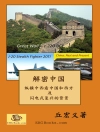This collection examines cloth as a material and consumer object from early periods to the twenty-first century, across multiple oceanic sites—from Zanzibar, Muscat and Kampala to Ajanta, Srivijaya and Osaka. It moves beyond usual focuses on a single fibre (such as cotton) or place (such as India) to provide a fresh, expansive perspective of the ocean as an “interaction-based arena, ” with an internal dynamism and historical coherence forged by material exchange and human relationships. Contributors map shifting social, cultural and commercial circuits to chart the many histories of cloth across the region. They also trace these histories up to the present with discussions of contemporary trade in Dubai, Zanzibar, and Eritrea. Richly illustrated, this collection brings together new and diverse strands in the long story of textiles in the Indian Ocean, past and present.
Inhoudsopgave
1. Introduction: The Ocean’s Many Cloth Pathways.- I. Regions of Production.- 2.Textiles and Silver: The Indian Ocean in a Global Frame.- 3. Cloth and Commerce: Understanding Indian Economic History.- 4. Handkerchiefs, Scarves, Sarees and Cotton Printed Fabrics: Japanese Traders and Producers and the Challenges of Global Markets.- 5. Kanga Made in Japan: The Flow from the Eastern to the Western End of the Indian Ocean World.- 6. A Worn Insecurity: Textiles, Industrialization and Colonial Rule in Eritrea during the Long Twentieth Century.- II. Trade, Exchange and Networks of Distribution.- 7. Distributive Networks, Sub-Regional Tastes, and Ethnicity: The Trade in Chinese Textiles in Southeast Asia from the Tenth to Fourteenth Centuries CE.- 8.Textile Reorientations: The Manufacture and Trade of Cottons in Java c. 1600-1850.- 9.’The Dearest Thing on the East African Coast’: The Forgotten Nineteenth Century Trade in ‘Muscat Cloth’.- 10.Converging Trades and New Technologies: The Emergence of Kanga Textiles on the Swahili Coast in the Late Nineteenth Century.- III. Cultures of Consumption.- 11. Warp and Weft: Producing, Trading and Consuming Indian Textiles across the Seas (First–Thirteenth Century CE).- 12. The Decline of the Malagasy Textile Industry, c. 1800-1895.- 13. Contemporary Geographies of Zanzibari Fashion: Indian Ocean Trade Journeys in the Run-Up to Ramadhan Festivities.- 14. Coda: The Fabric of the Indian Ocean World – Reflections on the Life Cycle of Cloth.
Over de auteur
Pedro Machado is Associate Professor of History at Indiana University, Bloomington, USA.
Sarah Fee is a Curator of Eastern Hemisphere Textiles and Fashion at the Royal Ontario Museum, Canada.
Gwyn Campbell is Professor of History and Director of the Indian Ocean World Centre at Mc Gill University, Canada.












